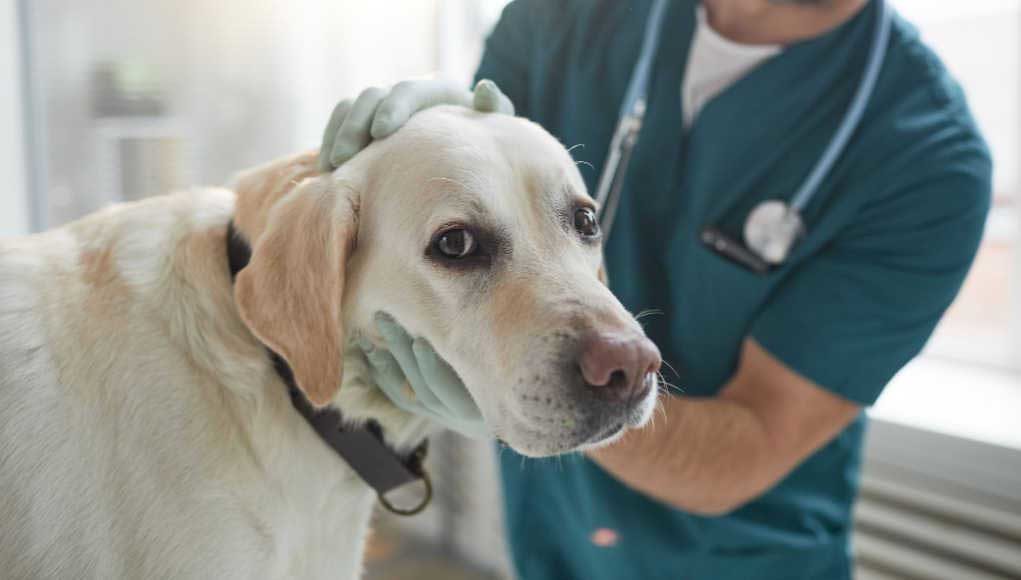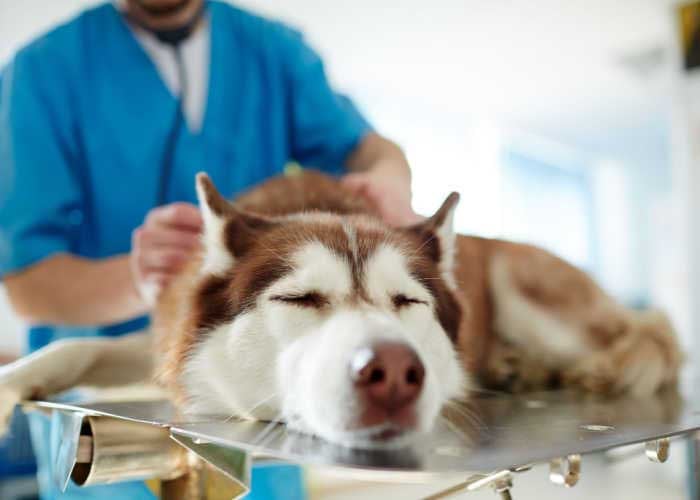Table of Contents
Cancer should not necessarily mean a death sentence to our furry friends. But how do we fight thyroid cancer in dogs?
In a study commissioned by the VCA Pet CancerCare Alliance, 90% of pet owners are aware that dogs can develop cancer. But still, many are hesitant to meet with veterinary oncologists.
Why?
To know someone who has undergone cancer treatment, you might assume that your beloved pet will be sick and miserable while undergoing cancer care. Or worse, maybe in pain and suffering.
But in fact, cancer care for pets is different from the experience for people. The treatments were designed to make our dogs feel better, not worse.
Thus, veterinarians try to make dogs as comfortable as possible when treating them.
One of the best steps you can take to make informed decisions about your pet’s quality of life is to get information on specific dog cancers.
So today, we will focus on canine thyroid carcinoma.
Thyroid Cancer in Dogs
It is a type of cancer that involves tumors originating from the thyroid gland in the neck.
The thyroid gland lies along the trachea (which is often called the windpipe) and plays a major role in the growth and development of the body.
It is responsible for producing thyroid hormones, which serve an important function in regulating metabolism.
When there is an abnormal growth of cells that make up the thyroid gland, thyroid tumors develop.
Benign tumors in dogs are referred to as thyroid adenomas, while malignant thyroid masses are carcinomas and adenocarcinomas.
Any breed can be stricken but is more commonly seen in Beagles, Boxers, Golden Retrievers, and Siberian Huskies.
You may wonder what causes thyroid cancer in dogs. Well, you should know that the cause of this disease, or any tumor or cancer, is largely unknown.
Although no one exactly knows why thyroid tumors develop, they may be linked to a few risk factors, such as the environment, or simply inherited from those developing the disease.
Are Thyroid Tumors Benign or Malignant?
Thyroid growths can be either benign (adenoma) or malignant (carcinoma).
Benign tumors in dogs do not spread and will not have a long-term impact on your pet’s health. However, they are rare because the majority of dogs have malignant tumors.
Thyroid carcinoma in dogs tends to spread to other parts of the body (such as the lungs and lymph nodes) and can grow into nearby structures, including the windpipe, esophagus, and blood vessels.
Even though about 90% of the tumors are malignant, they are nonfunctional and cause excessive thyroid hormone production.
Thyroid tumors are either small and freely movable or large and fixed to the surrounding tissues.
Dogs can also have thyroid tissue elsewhere in the body. This is called ectopic thyroid tissue, which is at risk of developing cancer, too.
While treatment depends on the progression of the disease, surgery, chemotherapy, and radiation are strongly suggested to improve the chance of survival.
Signs and Symptoms
The most notable sign of dogs with thyroid cancer is the presence of a lump in the neck.
In some cases, the thyroid mass compresses the windpipe. Thus, some other symptoms associated with the disease include:
- Coughing
- Rapid breathing
- Shortness of breath
- Change in the bark, becoming hoarse and dry
- Facial swelling
- Loss of appetite
- Weight loss
The swollen thyroid gland could be pressing on the esophagus, causing gagging and problems with swallowing. But oftentimes, dogs with thyroid tumors may show no signs at all.
See a vet for a proper diagnosis and course of treatment once you see signs that your dog might be suffering from thyroid cancer.
You may discuss additional testing to determine and plan the treatments that fit your pup’s needs. Talk about how large the cancer is and whether it has spread to other organs.
Regarding the treatment details, you may raise your concern about which options are recommended.
You can also ask how soon you can start the treatment and the potential side effects.
Diagnosis of Thyroid Cancer in Dogs
Your vet will start with a thorough physical examination and bloodwork (which will include an analysis of the thyroid hormone levels).
At times, further procedures such as CT scans, MRIs, and ultrasounds may be recommended.
The diagnosis of thyroid tumors in dogs can be made upon fine needle aspiration, which uses a syringe with a thin, hollow needle to suction out a sample of cells from the tumor.
But usually, a biopsy (wherein the vet collects a piece of tissue from the mass) is necessary to reach a definitive diagnosis.
Since most dog tumors are malignant, the doctor will have to perform advanced imaging to evaluate for possible spread to other areas of the body.
Not only is diagnostic imaging required to determine the extent of the disease, but it helps in assessing the potential for surgical removal or radiation treatment.
About 40-50% of dogs have evidence of metastases at the time of diagnosis.
So, your vet may recommend staging, which may include a complete blood count, urinalysis, and chest X-rays.
Undergoing these tests will help to evaluate the stage that cancer has reached. If left untreated, canine thyroid tumors will continue to grow to infiltrate nearby tissues.
Treatments of Thyroid Cancer in Dogs
A variety of treatment options are available for canine thyroid tumors. The choice of treatment will depend on the presence of metastasis, the extent to which the disease has invaded surrounding tissues, and the size of the thyroid mass.
Surgery is only recommended for dogs with loosely attached tumors and those with a limited invasion of the nearby tissues.
If the tumor is deeply invasive or firmly attached, surgical removal of all of it will not be possible.
Only 25% to 50% of patients are candidates for surgery. Thus, the other options are radiation therapy and chemotherapy.
Radiation therapy is advised for dogs with invasive thyroid tumors, as these lumps respond to radiation over many months. In most cases, durable control of the tumor is achieved.
It may also be useful in making previously invasive thyroid tumors more manageable for surgery.
Same with radiation therapy, chemotherapy is suggested particularly for larger and invasive tumors as the observed response rate is 30% to 50%.
Another treatment option is radioactive iodine, which can be used when metastasis or vascular invasion is found despite surgical removal.
It is given systemically to dogs that are poor surgical candidates.
There are only a few facilities that can perform this approach in dogs and only limited data is available on its effectiveness.
If your pet is showing any unusual signs or symptoms, always call your vet’s office for their advice and best recommendations.
As with most cancers, there is no known approach to preventing canine thyroid carcinoma.
Treatments focus on both controlling the tumor as well as addressing the concern for metastasis.
Prognosis and Survival Rate
With appropriate treatment, the prognosis for thyroid cancer in dogs is generally good. The outcome is even better with earlier diagnosis and treatment.
With radiation therapy, the overall median survival time is two years.
Results were lower with chemotherapy, although it may be more beneficial when combined with radiation therapy than a single treatment modality.
Dogs with tumors treated with complete surgical excision have median survival times greater than three years. Thus, surgery is the treatment of choice for thyroid cancer in dogs.
If untreated, dogs with malignant thyroid tumors have an average survival time of 3 months.
Recovery from Canine Thyroid Carcinoma
After surgery, it usually takes 10 to 14 days for the incision to heal. Keep your dog’s activity limited during this period and avoid putting any leash and collars on its neck.
While there are risks with any anesthetic and surgical procedures, most dogs do well and have no major complications following a surgical operation.
In most cases, recovery may require overnight hospital monitoring and discharge on the next day.
With radiation therapy of thyroid tumors, antibiotics or anti-inflammatory medications may be prescribed to manage side effects.
Encourage your pooch to eat soft, moist foods during the treatment and recovery period.
Your radiation oncologist will discuss any concerns about the side effects based on your pet’s treatment field.
RELATED: Homemade Dog Food for Cancer
FAQs about Thyroid Tumors in Dogs
How fast does thyroid cancer spread in dogs?
Thyroid cancer has a fast rate of spread into surrounding tissue and other parts of the body. About 35 percent of dogs already have metastasis at the time of diagnosis.
What is the life expectancy of a dog with thyroid carcinoma?
When diagnosed and treated early, the prognosis is good to excellent.
Depending on the type of treatments used, life expectancy can range from 1 to 3 years.
How do they test for thyroid tumors in dogs?
A biopsy is usually necessary to reach an accurate and reliable diagnosis. Since most tumors in dogs are malignant, advanced imaging is required to determine the extent of the disease.
Thyroid Cancer in Dogs: Final Thoughts
No matter how prepared you think you are, it will be one tough day once you realize your sweet pup has cancer.
But just like thyroid cancer in dogs, today’s treatments are readily available to give you and your pet more quality time together.
Worried about the cost of cancer care? All the more reason why it’s worth meeting with a veterinary oncologist!
Cancer specialists will merely share important information to help you decide what to do if ever your pet is diagnosed with cancer.
Their job is to give you options that will address all of your concerns.
Even though everyone is on the same page in fighting cancer, it will be entirely up to you on what course of action to take for your pet’s quality of life.

















